Japanese horror movies are their kind of scary. Even if they’re about serial murderers or angry ghosts, these films elicit a unique kind of anxiety, one steeped in existential dread about what it means to be alive and the loneliness that comes with it. It’s a type of nihilism frequently coupled with the ludicrous, resulting in Horror that emphasizes life’s folly.
This tone makes it difficult to convert classic japanese horror movies to a Western audience. Because they are so obviously Japanese, eliminating the cultural context also eliminates the Horror. It’s not simply gruesome pictures but a more profound psychological concern spawned by the rise of loneliness in the digital era.
This collection seeks to highlight the enormous diversity of horror japanese movies, ranging from silly horror comedies to terrifying stories of ghostly viruses. It also aspires to represent Japan’s burgeoning horror scene, inextricably related to a complicated mythology tradition, including spirits, demons, and demons.
Some filmmakers will receive numerous mentions – horror legends as Takashi Miike & Sion Sono are not so many experts in their field, but also prolific. Their impact on the genre can’t be measured in a single film. If you’re new to Japanese Horror, this is an excellent place to begin your exploration of this strange and fantastic world.
Top Japanese Horror Movies You Must Not Miss, In No Particular Order.
20- Twilight Dinner (1998)
Initial release: February 27, 1998
Director: Yutaka Ikejima
Cast: Kazuhiro Sano, Daikei Shimizu
Why: It’s a more sophisticated pink flick. Rather than the out-and-out exploitation efforts generally highlighted here, a lot of material goes in a different route by adding a bit of class to the proceedings.
Also, there are sequences in this japenese horror movies that use more classic camera techniques and sets, which would be expected in other romantic films of the period, ranging from the stylized to the realistic cinematography showing the sisters leaving the apartment while being on the prowl to shots of the two having romance in her flat, which are framed by a succession of decorative sculptures.
These views and elaborately sequences appear across the movie, lifting it and looking and feeling much more substantial and larger than a typical pink picture.
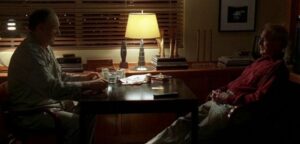
Plot: Following the exceedingly gory killing of an innocent woman, police question a pale-looking guy named Kazuhiko. He begins his tale with two sisters, Akiko and Mayuko, in his home. After assisting the couple with their relocation, he begins a conversation with the younger sister, quickly developing into an intimate relationship.
The romance lasts for a time, but the sisters pack up and leave one day, not before telling Kazuhiko about their secret. What secret could have compelled him to conduct such a heinous crime? Didn’t he?
19- Cold Fish
Release date: January 29, 2011 (Japan)
Director: Sion Sono
Music by: Tomohide Harada
Distributed by: Nikkatsu
Why: A well-crafted, suspense-filled trip with moments of levity, poignant drama, believable and likable people, and scary and unexpected characters. The film itself is full of surprises and gruesome imagery that will give these most hardened japanese horror movies fans a cringe while still delivering some laughter; it’s unique, and it succeeds on practically every level.
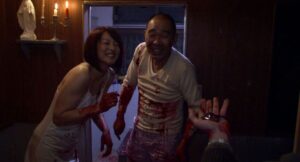
Plot: Whenever Syamoto’s young daughter is accused of stealing, a kind middle-aged guy steps in to help. Miyamoto’s troubled daughter is offered a job at the man’s and his wife’s fish business. Miyamoto quickly learns the shocking reality about the seemingly ideal marriage.
18- Wild Zero
Release date: August 28, 1999 (Japan)
Director: Tetsuro Takeuchi
Music by: Guitar Wolf
Production company: Dragon Pictures
Distributed by: Netflix
Why: Tetsuro Takeuchi’s Wild Zero (Japan, 2000) is a wonderfully unconventional zombie japanese horror movies with a genuine heart and depth that makes it much more than just another gory Asian horror actioner in the tradition Ryuhei Kitamura’s ultra-violent Versus from the same year,
For example, the film is almost a musical and occasionally a pretty gory horror film, an action film, a comedy, and a heartwarming drama at the same time. It is about one of the most significant and universal things in life and thus in cinema.

Plot: Aliens are invading the planet and turning humans into zombies. After saving his heroes, Guitar Wolf, from their manager and having the honor of becoming their blood brother, wannabe rocker Ace finds himself caught up in the carnage. He didn’t think he’d need Guitar Wolf’s help quite so soon.
17- Noriko’s Dinner Table
Release date: September 23, 2006 (Japan)
Director: Sion Sono
Film series: Suicide Club
Distributed by: Eleven Arts, Argo Pictures
Why: This was a roller coaster through the sickness of the human mind and backed up to blue skies. I was blown away by this after watching Suicide Club (which, in my view, was highly ordinary to not so excellent). The Suicide Circle backdrop was unnecessary for the japanese horror movies. The symbolism was well-presented, and the analogies were well-matched to the plot.
The ambiance is intensely dramatic and perfectly complements the film’s idea. While viewing, you may feel that you are slipping from reality to imagination and back again until you are unsure of what is true. For this, we must applaud the well-presented personalities. This was an outstanding film.
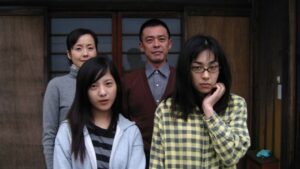
Plot: The film is broken into five chapters, the very first 4 of which are titled after characters in the film, in that order: Noriko, Yuka, Kumiko, and Tetsuzo. The story is recounted in a non-linear fashion, switching between Noriko’s, Yuka’s, and Tetsuzo’s points of view.
Noriko Shimabara (Kazue Fukiishi), a meek and frightened 17-year-old girl, lives in Toyokawa, Japan, with her peaceful family, which includes her sister Yuka (Yuriko Yoshitaka), mother Taeko (Sanae Miyata), and daddy Tetsuzo (Ken Mitsuishi).
Noriko is dissatisfied with her small-town existence and wishes to go to Tokyo, where she believes she will live a more active lifestyle. This feeling is bolstered when she learns that her primary school buddy Tangerine (Yoko Mitsuya) is working as an idol on her own.
16- Battle Royale
Release date: December 16, 2000 (Japan)
Director: Kinji Fukasaku
Japanese: バトル・ロワイアル
Adapted from: Battle Royale
Box office: $30.6 million (est.)
Distributed by: Toei Company
Why: Battle Royale is an outstanding, original, impressive best japanese horror movies that manages to convey several solid messages without compromising a bit of the action/violence. Some movies skip action and emphasize dialogue to deliver a subtle message.
Then there is Battle Royale which conveys so many subtle messages despite being filled to the brim with action: not something every filmmaker does, and that’s its most significant achievement, in my honest opinion.
The film is gripping from the beginning, i.e., the R-15 disclaimer clarifies that the film isn’t meant for young viewers. Indeed, it isn’t, but by today’s standards, the level of shock is a bit lower. So, most of the violent actions didn’t seem excessively disturbing at all. BR is very fast-paced, and not a single second is wasted.
Every bit of it is rewarding, and it manages to be intriguing without even relying on heavy CGI. The whole film is one big action sequence with several conversations and flashbacks as well, and through this pattern, we’re given a story where we get to know every prominent character well.
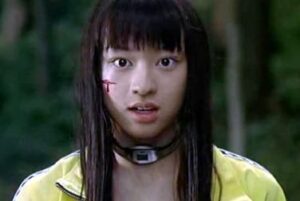
Plot: Battle Royale is a game with 42 pupils, three days, and one lonely island. Legislation has forced a group of ninth-grade pupils from a Japanese grade 10 to engage in a Battle Royale. The pupils are sent off to murder one another in a no-holds-barred game until one of them survives — or they all die.
Some, like the deranged Kiriyama or the seductive Mitsuko, choose to play the game, while others strive to find a way off the Park without resorting to violence. There seems to be no way for Shuya and his colleagues to survive as the numbers dwindle?
15- Dark Water
Release date: July 8, 2005 (USA)
Director: Walter Salles
Adapted from: Dark Water
Music by: Angelo Badalamenti
Box office: $44.4–49.5 million
Distributed by: Touchstone Pictures, Walt Disney Studios Motion Pictures
Why: I loved this japanese horror movies. Very underrated. I like that the storyline is different from that of other horror movies. This adds to the mystery of not knowing what to expect.
In addition to this, considering it was ten years before the Elisa Lam case, it is genuinely shocking looking at the similarities between the two. It is as if this movie predicted what happened. This adds to the horror/creepy factor this movie portrays.
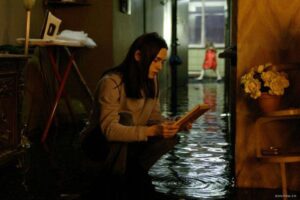
Plot: Dahlia Williams and daughter child Cecelia relocate to Roosevelt Island, New York, into a run-down apartment. She is now going through a divorce, and the apartment is all she can afford, although it is close to an outstanding school for her kid.
From the moment she walks in, there have been strange events, and there is a continual trickle from the roof in the single bedroom. The flat directly above hers is also making noises, even though it appears abandoned. Is the flat haunting, or is there some other, more obvious explanation?
14- Confessions
Release date: June 5, 2010 (Japan)
Director: Tetsuya Nakashima
Adapted from: Confessions
Language: Japanese
Box office: $45.2 million
Distributed by: Toho Co., Ltd., MGM Home Entertainment
Why: This is a terrible film, devoid of substantial meaning as it becomes a messy tale of revenge. Potentially the worst part of the film, which takes away from the redeeming values of its plot, is the cinematography, music, editing, and frame selection.
The movie resembles a dark, edgy, and cringy anime adaptation that provokes shock but causes genuine laughter at the protagonists’ reactions. The scariest japanese horror movies final minutes are tough to sit through and are full of slow-motion running, yelling, nose bleeding, explosions, and a highly unnecessary crossover. Downright awful.
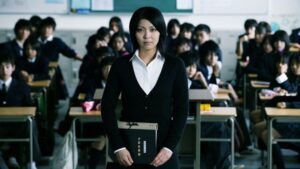
Plot: Junior high school teacher Yuko Moriguchi (Takako Matsu) announces her rowdy, disrespectful class to resign before spring break. She reveals that she used to take her 4 kid Manami to school with her since her HIV-positive father was sick. Manami was discovered drowning in the school pool one day.
She reveals that her daughter was murdered by two pupils in her class, whom she refers to as “Student A” and “Student B.” Yuko had discovered an unidentified little rabbit purse among Manami’s things, prompting her to investigate Shuya Watanabe, one of her pupils. Shuya, Student A, acknowledged murdering Manami right away, then insulted her humanitarian reaction with the phrase, “Just kidding.”
13- Cure
Release date: December 27, 1997 (Japan)
Director: Kiyoshi Kurosawa
Screenplay: Kiyoshi Kurosawa
Cinematography: Tokusho Kikumura
Story by: Kiyoshi Kurosawa
Languages: Japanese, Spanish
Why: It’s one of those famous japanese horror movies you will not forget. It is an excellent mix of the modern thriller and the classically weird mystery. About fifteen minutes in, I questioned my choice, but shortly after that, I became mesmerized. The antagonist is one of the most unique and memorable serial killers in movie history.
He’s so aloof yet unpredictable. It’s just a damn shame that so few have had the chance to see this movie. I went in absolutely blind, knowing only it had received high praise and was enthralled right from the start.
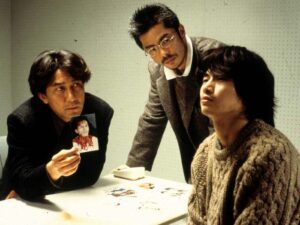
Plot: A wave of gruesome murders is sweeping Tokyo. The only link between the victims is a bloodied X etched into their necks. In each case, the killer is discovered near the victim and has no recollection of the act. Detective Takabe & psychiatrist Sakuma are dispatched to investigate the link, but they come up empty-handed.
A peculiar young guy is apprehended at the scene of the most recent murder, and he has an unusual influence on everybody who comes into touch with him. Detective Takabe begins questioning the individual to discover his involvement in the murders.
12- Noroi: The Curse
Initial release: August 20, 2005
Director: Kōji Shiraishi
Budget: $2 million
Language: Japanese
Production company: Xanadeux Company
Distributed by: Cathay-Keris Films
Why: This movie had a real story and a very original plot. What appears to be a home video delves deeper into the hole of the mystery involving many individuals until the shocking reality is exposed at the end of the film.
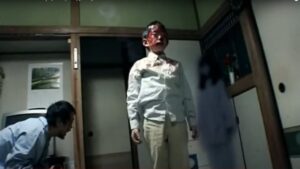
This was the most well-crafted horror film I’ve ever seen from japanese horror movies. The plot is intricate, involving three psychics, a kid, and a dynasty of Shinto (Japanese religion) priests, despite the crude graphics (which may have been done on purpose).
Seven people commit suicide when TV reporters become embroiled in paranormal activity. It won’t be clear who is pulling the thread until all of the jigsaw pieces are in place.
Plot: Masafumi Kobayashi, a ghost researcher who has posted a series of books and movies on unexplained phenomena in Japan, is the subject of the film. Kobayashi vanished while filming
The Curse after his house burned down and his wife Keiko was discovered dead in the ashes. The documentary, as mentioned above, begins to play, primarily through Kobayashi’s cameraman Miyajima’s recordings.
After her neighbor hears the sound of screaming infants coming from her house a year and a half ago, Kobayashi examines Junko Ishii and her son. Ishii leaves soon after, and Kobayashi and Miyajima visit her old house to discover dead pigeons.
11- Godzilla
Release date: July 29, 2016 (Japan)
Directors: Hideaki Anno, Shinji Higuchi
Music by: Shirō Sagisu
Box office: US$78 million
Japanese: シン・ゴジラ
Distributed by: Toho Co., Ltd.
Why: This is the new Godzilla in the Japan earthquake and Fukushima era. It’s not about an invincible military force dropping a nuclear weapon on susceptible populations, but about a biological disaster that continues to develop and fester as politicians stumble and fumble ineffectively. The japanese horror movies is billed as a political parody, yet the monster is thrilling.
It starts as a cheap fluffy incompetent puppet, but as the movie progresses, it morphs as the powers that be can’t determine what to do. The horrific ultimate form is irrepressible and lethal, but might it have been halted earlier if the country’s leaders had taken swift action?
The American engagement is also amusing, demonstrating how the relationship with former war winners has developed.
It was both humorous and sad simultaneously, satire and science fiction, yet it moved at a snail’s pace. It’s worth seeing, and it’s undoubtedly more entertaining and educative than most other Godzilla films.
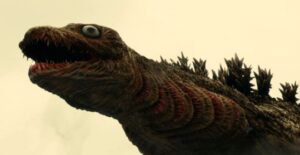
Plot: An unidentified disaster happens on Tokyo Bay’s Aqua Line, prompting the construction of an emergency cabinet. A massive beast arrives out of nowhere, killing village after town before landing inside the capital. “Godzilla” is the name of this mysterious colossal monster.
10- Ringu
Release date: January 31, 1998 (Japan)
Director: Hideo Nakata
Adapted from: Ring
Language: Japanese
Box office: $19.4 million (est.)
Distributed by: Toho Co., Ltd.
Why: Japanese Horror is something else. As a horror fan, I see Ringu as the most iconic foreign movie that inspired many notable japanese horror movies.
In saying this, I am fully aware Onibaba, Kwaidan, and Hausu is 3 old classics that go way back, all three of which I enjoyed. But Ringu was the first to bring more attention to Japanese takes of the genre.
Only a few years after Ringu’s release, we get an audition, Ichi the killer, and the start to the Ju-On franchise.
At its time, this movie was so novel and creative. People tend to look past this because this is an age where such ideas are considered “typical.” Please give it a watch, horror fan or not.
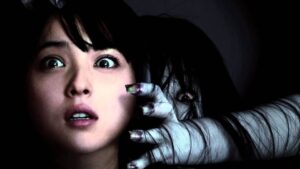
Plot: Reiko Asakawa is researching a ‘Cursed Video’ interviewing teenagers about it. Reiko investigated when his niece Tomoko died of sudden heart problems’ with a terrified expression on her face. She discovers that several of Tomoko’s colleagues, who had been on vacation with her the week before, had died in the same manner on the same evening at the same hour the week before.
Reiko finds an ‘unlabeled’ videotape in the cottage where the youngsters had stayed. Reiko listened to the recording and was horrified to realize that it was the ‘cursed VHS.’ Ryuji, Reiko’s ex-husband, assists her in solving the mystery, and Reiko gives him a duplicate for further study.
When his son Yoichi views the tape that Tomoko had ordered him to, things get even more strained. Their find leads them to something like a volcanic island, where the video unites Sadako, a psychic who passed 30 years ago, with her kid.
9- Ju-On: The Grudge
Release date: January 25, 2003 (Japan)
Director: Takashi Shimizu
Music by: Shiro Sato
Box office: ¥500 million (Japan); $3,657,876 (overseas)
Production companies: Pioneer LDC; Nikkatsu; Oz Co. Xanadeux;
Distributed by: Lionsgate Films, Nikkatsu, NBCUniversal Entertainment Japan
Why: The movie unfolds following different connected stories in a non-linear timeline. “Ju-on: The curse of one who dies in the grip of powerful rage. It collects and has an influence in the places where the individual lived. Those who come into contact with it perish, and a new evil is born.”
The non-linear storytelling causes the japanese horror movies to move in a disorganized manner, preventing any build-up of tension. The acting is average to good. The weird youngster and the growling noises are the only attractive features of the film.
The kid’s first appearance is a little lackluster. It doesn’t assist that it’s in the middle of the day in an uninteresting way. There isn’t a single horrifying moment in this film.
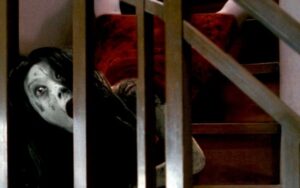
Plot: Takeo Offers exciting murders their wife, Kayako, after realizing she is in love in the first place, as well as his son Toshio and the family cat Mar. The vengeful spirits are resurrected due to the killings, with Kayako’s ghost slaying Takeo.
Everybody who enters their Nerima, Tokyo, home is ultimately eaten by the curse, which travels to the location where they die and, in turn, devour anyone who enters.
The Tokunaga family, which consists of salaryman Katsuya, his spouse Kazumi, and his sick mother Sachie, are the most recent proprietors of the residence. Kazumi succumbs to the curse fast, and Katsuya gets emotionally touched by Takeo’s character before dying as well. Kayako’s spirit accompanies her to her job and residence when Katsuya’s sister Hitomi dies.
8- Hausu
Release date: July 30, 1977 (Japan)
Director: Nobuhiko Obayashi
Music by: Asei Kobayashi; Mickie Yoshino;
Story by: Chigumi Obayashi
Language: Japanese
Distributed by: Toho Co., Ltd.
Why: House (Hausu) must be seen to be believed, especially in front of a packed theatre or with a group of friends who are prepared for anything that would happen in a movie. This japanese horror movies haunted mansion contains the type of strange nightmares and bizarre flashes of hilarity that you wouldn’t find in a Manga.
And the film’s aesthetic, which sets up this type of not-quite-ghost narrative, is already distorted to a bizarre state of affairs.
If you believe you’ve seen bizarre, buy up this film on DVD or look for it whenever it’s screening in an art-house or somewhere and give it a chance the way home, you’ll be shocked, perplexed, and laughing.
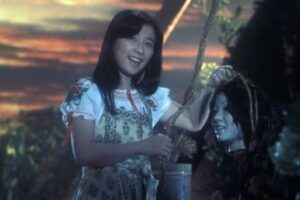
Plot: Oshare (Gorgeous) is hoping to spend summer break with her dad until she learns that his gorgeous, abnormally tranquil girlfriend Ryouko will be joining them. Instead, Oshare decides to go to her aunt’s country house.
Fanta (who loves to snap photographs and imaginings a lot), KunFuu (who has exceptional reflexes), Gari/Prof (who is a considerable geek), Sweet (who loves to clean), Mac (who eat lots), and Melody (who eats a lot) are among her buddies from school (a musician).
The girls, on the other hand, are completely oblivious that the mansion is haunted. When they get home, strange things happen, and the girls start to vanish one by one as they try to figure out what’s going on.
7- Suicide Club
Release date: March 9, 2002 (Japan)
Director: Sion Sono
Music by: Tomoki Hasegawa
Budget: $250,000
Produced by: Seiya Kawamata; Junichi Tanaka; Toshiie Tomida; Seiji Yoshida
Distributed by: TLA Releasing
Why: I thought this film was very well made though extremely confused at times. A horror film that contains masses of suicide after another caused by a group of teenage girls is terrifying. Before I watched this japanese horror movies, I thought this film was about people who get possessed by some ghost and commit suicide. It didn’t turn out to be what I expected. It does not matter. I still found this film to be very exciting.
The character development for the detective was done very well. The ways the people commit suicide were creatively done. The opening scene was just done wonderfully well. The high school kids slowly get obsessed with committing suicide(the tension and fear that builds up in that scene is fantastic). I love the messages the show conveys.
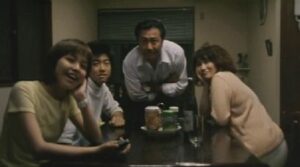
Plot: On May 27, 54 adolescent schoolgirls in Tokyo committed mass suicide by jumping in front of an approaching train. Soon later, two nurses at a hospital commit themselves by leaping out a window. Strips of skin have already been found both in locations, with tissue from the coils matching that of the burned corpses.
A hacker named Kiyoko (Yoko Kamon) alerts three investigators, Ry Ishibashi, Masatoshi Nagase, and Akaji Maro, to a connection between the suicides and a website that shows the number of suicides on red and white circles.
Many teenagers leaped off a high school roof at lunch on May 28, sparking a hunt for a “Suicide Club” in the city. The suicide epidemic had swept Japan by May 29. Mitsuko is driving home when she is hit by Masa, her boyfriend, who has jumped off a roof. Mitsuko is arrested and transported to the police station, strip-searched, and a butterfly tattoo is discovered.
6- Onibaba
Release date: November 21, 1964 (Japan)
Director: Kaneto Shindo
Music by: Hikaru Hayashi
Cinematography: Kiyomi Kuroda
Distributed by: Toho Co., Ltd.
Why: This is an authentic typical japanese horror movies, black & white, period piece. It’s handled in the spirit of, say, a Kurosawa film, which means it’s languid, elegant, and all about the build-up to something spectacular.
It’s a straightforward narrative. There’s not much to the narrative if you start studying it. It just has a few people, and it avoids becoming overly convoluted by including some very dramatic or exaggerated tales. The tale and characters are kept straightforward and, above all, human. The girl wants something thing, the man wants another, and the mother wants still another.
This is essentially how the tale may be broken down. However, there is still a lot more to it. During the 14th century, wars, and Japan, they go through many ordeals, interactions, and emotions to obtain what they desire.
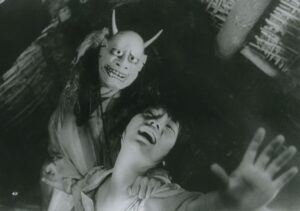
Plot: During a civil war in Japan in the 1400s, a middle-aged woman and daughter-in-law live in a hut in a reed field, murdering warriors and the military to sell their belongings for sustenance.
They find that their son and spouse Kichi perished while taking supplies from farmers when their neighbor Hachi defected from the military and returned home. Hachi soon seduces that young mother, and she begins to slip out of her hut at night to have intercourse with him.
When the elderly lady discovers her daughter-in-affair, the law begs Hachi to help the younger woman with her until she would be unable to kill the troops without her assistance. Hachi, on the other hand, disregards her advice and proceeds to meet with the young woman.
When a samurai in a demon mask approaches the older lady in her hut and asks her to take him out from the field, she draws him into the hole where she dumps the remains of her victims. She descends the hole to retrieve his belongings and disguise, only discovering that he is a scarred man.
To keep her daughter-in-law away from Hachi, she employs the devil mask to torment her. She is astonished, though, when she needs to abandon the mask.
5- Marebito
Initial release: May 22, 2004
Director: Takashi Shimizu
Music by: Toshiyuki Taking
Box office: $107,259
Nominations: Digital Cinema Award – Special Mention, Digital Cinema Award
Why: This movie is a pleasant offering for any fan of Japanese cinema and weird mystery movies. I just gave this movie a try because I was attracted by the strange cover of a naked woman and a press text on the back that compared this movie to the works of Cronenberg and especially Lynch, which I admire.
This japanese horror movies is not as strange and difficult to follow as the works of David Lynch. Still, it comes pretty close and proves its uniqueness with a weird fantasy story. Many original ideas make you doubt reality or illusion in this movie as the frontier between both is a tiny path.
The movie lives by its strange and mysterious central character, by its dark and frightening scenes in the metro or the strange apartment, and by its idea that the main character films everything he sees.
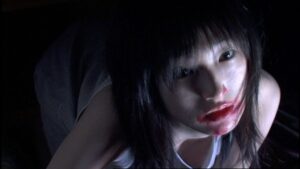
Plot: Takayoshi Masuoka (Shinya Tsukamoto), a freelance cameraman, carries a camera everywhere he goes. After witnessing a terrifying guy stab himself in the eye with a knife, he gets fascinated with the concept of terror. Masuoka travels into a complex underground area under the town.
He encounters humanoid beings that move on their hind legs and howl like dogs, hoping to comprehend the man’s terror before his death. Masuoka comes into a homeless man who tells him about the “Deros” while scouring the tunnels and channels.
He then encounters the spirit of Kuroki, a man who committed suicide, and discovers more about the afterlife. Masuoka finds a mountainous region with a settlement established by the subterranean inhabitants after hours of searching.
He discovers a nude female confined to a wall (Tomomi Miyashita). When he returns to his apartment, he sees she isn’t eating, drinking, or speaking.
4- Kwaidan
Initial release: December 29, 1964
Director: Masaki Kobayashi
Music by: Toru Takemitsu
Box office: ¥225 million
Distributed by: Toho Co., Ltd.
Adapted from: Kwaidan: Stories and Studies of Strange Things, MORE
Why: This movie is, simply put, a masterpiece of Horror. There is unlikely to be a horror fan that would not enjoy it. Fans of “Tales from the Darkside” will recognize the inspiration for one of my favorites in the series.
The one downside is that the best stories were first, with the less interesting ones towards the end. The japanese horror movies are ordered best to least good (I can’t use “worst” because there is no worst in this collection). Highly recommended.
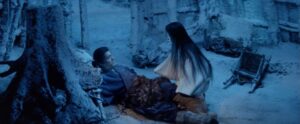
Plot: “Black Hair” is about a poor samurai that ends in divorcing his true love to marry for money, but the marriage ends in disaster, so he returns to his former wife, only to uncover something strange about her. “The Woman inside the Snow”:
A woodcutter is trapped in a snowstorm when he encounters an ice ghost in the shape of a woman who saves his survival on the requirement of how he never tells anyone about her.
He forgets about his vow a decade later. “Hoichi the Earless”: Hoichi is a blind monk who sings so brilliantly that a phantom imperial court commissions him to recite the epic song of their dying fight for them.
However, the spirits rob him of his life, so the monks decide to shield him by painting a sacred phrase over his body, rendering him hidden from the ghosts. But there’s one thing they’ve forgotten. A writer relates the story of a guy who continues seeing a mystery face mirrored in his cup of coffee or tea in “In a Cup of Tea.”
3- 10 Tales Of Terror From Tokyo And All Over Japan
Directed by: Keita Amemiya(segment Yakusoku)
Writers: Ryûta Miyake(screenplay)
Stars: Naoto Takenaka, Yasufumi Hayashi, Kazunari Shigesawa
Why: I recommend you watch this japanese horror movies. Some scenes, such as “The Promise” or “The Nightwatchmen,” combine comedy with Horror. This Japanese film is recommended if you dislike blood and gore, if you prefer short tales, if you appreciate entertaining movies, and you don’t mind uninteresting storylines like “Annabelle”.
This is a creative collection of frightening tales that the makers have painstakingly stitched together. I say intelligent because each of these stories may easily be interpreted in two ways. Are these stories about ghosts or mental illness? Each story is thrilling and holds the audience’s attention throughout.
Although it is not a terrifying film, it does have a compelling, unsettling atmosphere that is evident in five creepy tales. The performance is excellent, and the cinematography is close, giving the spectator only enough to pique their interest before wham! It’s well worth your time to see, and it’s a well-made picture.
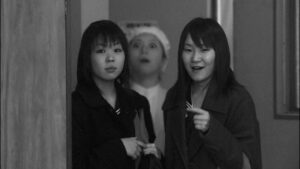
Plot: Based on Hirokatsu Kihara and Ichiro Nakayama’s collection of stories from around Japan, as well as the Japanese nightmare TV show “Kaidan Shin Mimibukuro.” “Yaki no hôkokusho” (“The Night Watchman”), “Zan’en” (“Wisps of Smoke”), “Tebukuro” (“Gloves”), “Omoitsu!” (“The Weight”), “Sugatami” (“Full-Length Mirror”), “Shisen” (“Line of Sight”), “Yakusoku” (“The Promise”), & “Hisao” were among the 8 stories included.
2- Teke Teke 2
Release date: March 21, 2009 (Japan)
Director: Kōji Shiraishi
Written by: Takeki Akimoto
Language: Japanese
Distributed by: Metro-Goldwyn-Mayer
Cinematography: Shuji Momose
Why: This film has two dimensions: an idol movie and a japanese horror movies. Typically these two do not mix, but it did for me in this case.
Teke-Teke is a lady with no leg muscles who cuts anyone who swings around in two, according to urban legend. “Teketeke” is a representation of the average Japanese horror film.
It’s frightening, but not to the point where I can’t leave the house. Girls are cut in two, but not in an unduly brutal and nasty way. In every sense, it’s ideal for me.
All victims are beautiful women, and charming girls are an added benefit. The folks who created this movie had to be pervs, and I had to be a perv as well since I liked it.
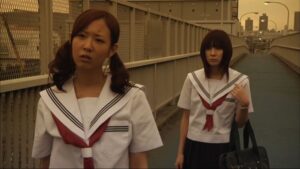
Plot: Hiromi Shimizu, an office worker in Nagoya, Japan, walks home in the dark along a bridge near the city center and railway. She senses a strong breeze, hearing a scuttling sound, and therefore is pursued by a strange, fast-moving thing.
She manages to flee the danger and hears children discussing the details of the urban legend in a neighboring building. The wind kicks up again as she walks into the street, and the thing slashes her in halves at the waist.
Ayaka Sekiguchi, Kana Ohashi’s closest buddy and colleague, later requests Kana Ohashi to take soccer player Utsumi Keita out and for her. Kana accepts, and Utsumi decides to meet Ayaka on a date. Utsumi gives Kana & Ayaka a news story about the mysterious death in Nagoya on his smartphone the next day.
Utsumi recalls a story of Teke Teke, a demon with no lower extremities, that he learned in elementary school. When people walk on the walkway at night, Teke Teke is supposed to pursue them down (creating a “take take” noise while she travels over the ground) and chop them in half if they glance back.
1- Tomie (1998)
Directed by: Ataru Oikawa
Writers: Junji Ito(comic)Ataru Oikawa
Why: This movie has kicked off many sequels and seems to be among the most popular contemporary japanese horror movies looking forward to experiencing Tomie’s universe with this debut film because I am a great lover of Japanese cinema.
To be honest, I was just a little disappointed at first. The film has a grim tone about it, but it develops slowly. Around the same time, the plot appears to be relatively standard, with a schoolgirl dealing from amnesia and being tormented by her past, as well as a wicked demon in the shape of a beautiful girl who resurrects regularly.
The film appears to be peppered with sequences of various lengths; for instance, a detective speaks with the woman’s psychologist for roughly seven mins.
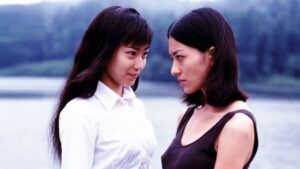
Plot: In Japan, the police investigate the murder of high school girl Tomie Kawakami (Miho Kanno). In the weeks following the incident, they found that nine pupils and one instructor committed themselves or went mad.
Other Tomie Kawakami was also slain three years before in rural Gifu prefecture, according to the investigator assigned to the investigation (Tomoro Taguchi). Once Japan began to develop in the 1860s, several killed Tomie Kawakamis were uncovered.
Tsukiko Izumisawa (Mami Nakamura), an architecture student with amnesia, is one of Tomie’s classmates tracked down by the investigator.
She has no recollection of the 3 months leading up to Tomie’s tragedy and is beginning to suspect a supernatural reason. In the meantime, Tsukiko’s next-door neighbor is raising a strange baby-like creature. It develops into a lovely adolescent lady with her orange eyes who responds to Tomie Kawakami after a few weeks.
Conclusion: In this article, I’ve listed and briefly discussed 20 of the most successful japanese horror movies. The movies discussed are some of the most well-known films of all time. You may recognize some of these films from their influence on Hollywood. Also, check Japenese Romance Movies.
